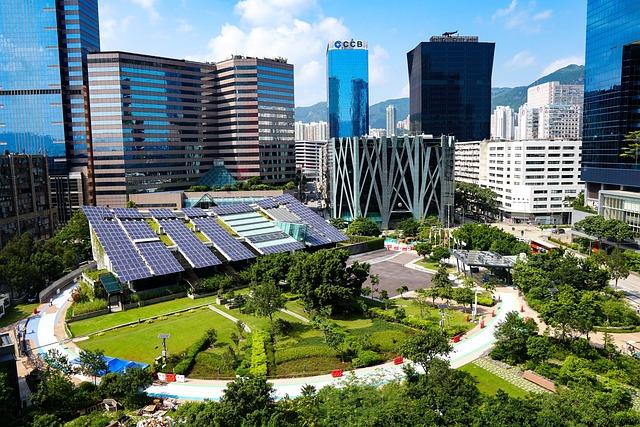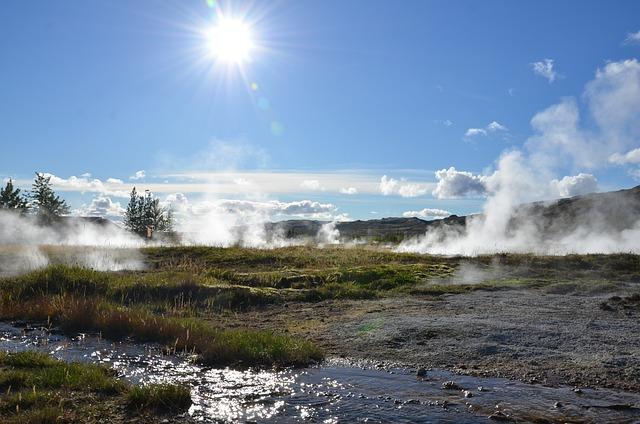- Introduction to Fervo Energy Geothermal
- How Geothermal Energy Works
- Fervo Energy's Advancements in Geothermal Technology
- Why Geothermal Is a Sustainable Energy Source
- Challenges in Scaling Geothermal Energy
- FAQs
- Conclusion
- References
Introduction to Fervo Energy Geothermal
When it comes to renewable energy sources, solar and wind often dominate the conversation. However, geothermal energy is an emerging and highly sustainable resource that is gradually gaining recognition. One company at the forefront of advancing this technology is Fervo Energy. Fervo is reimagining geothermal energy through modern technological innovations that leverage advanced drilling techniques, fiber optic sensing, and computational analysis. In this article, we will dive into what makes Fervo Energy unique and how they are pushing forward the boundaries of geothermal energy.
This article will cover the following topics:
- An overview of how geothermal energy works, providing you with the science behind harnessing this power source.
- The latest technological advancements that Fervo Energy brings to the geothermal sector.
- Why geothermal energy is considered one of the most sustainable and reliable renewable energy sources.
- The challenges faced in scaling geothermal energy for widespread use.
Let’s begin our deep dive into Fervo Energy and the future of geothermal power.
How Geothermal Energy Works

(Image: Pixabay/@neanet)
To understand how Fervo Energy is accelerating the adoption of geothermal energy, we must first look at how geothermal energy works. Geothermal energy is derived from the heat stored beneath the Earth’s surface. As you dig deeper into the Earth's crust, temperatures rise dramatically, particularly near tectonic plate boundaries.
In traditional geothermal systems, wells are drilled into these hot regions to bring steam or hot water to the surface. This geothermal fluid can then be used to turn turbines, converting thermal energy into electricity. Closed-loop systems, where the water is reinjected underground, help to sustain the heat extraction process over time, making it a renewable source of energy.
Geothermal plants are generally more stable compared to intermittent renewable sources like wind and solar, as the Earth’s heat is constant. This allows geothermal power to generate a consistent supply of electricity 24/7 throughout the year.
In addition to electricity generation, geothermal energy can also be used for district heating, agriculture, industrial applications, and even for direct-use purposes like heating waters for spa resorts, reducing dependency on fossil fuels in diverse sectors.
Fervo Energy's Advancements in Geothermal Technology

(Image: Pixabay/@Vilkasss)
Fervo Energy distinguishes itself by employing technological innovations not usually seen in the conventional geothermal industry. The company uses techniques similar to those employed in oil and gas drilling but adapted to geothermal applications. These advancements make geothermal energy cheaper and more efficient to harvest.
Here are some key areas where Fervo Energy stands out:
Advanced Horizontal Drilling
Most geothermal wells are vertical, but Fervo Energy applies horizontal drilling techniques to increase the well’s interaction with hot rock, thereby improving the flow of heat-bearing fluids to the surface. Horizontal drilling allows access to larger volumes of hot rock than traditional vertical methods.
Fiber-Optic Sensing
Fervo Energy uses fiber-optic cables that run along the length of their geothermal wells. These sensors monitor aspects such as temperature, pressure, and seismic activity in real-time, allowing the company to optimize resource extraction and maintain efficiency. The data analytics capabilities allow operators to develop predictive maintenance programs, ensuring the long-term sustainability of the geothermal reservoirs.
AI and Machine Learning
Harnessing the ability to analyze large datasets, Fervo Energy incorporates machine learning models to predict energy output, improve drilling accuracy, and simulate outcomes in real-time. This increases precision during exploration, reduces risk, and lowers the overall cost of developing new geothermal sites.
Why Geothermal Is a Sustainable Energy Source

(Image: Pixabay/@blazejosh)
Geothermal energy offers a range of environmental and efficiency benefits that make it stand out among renewable resources, especially in terms of long-term sustainability.
Low Carbon Footprint
One of the greatest advantages of geothermal energy is its minimal greenhouse gas emissions. Unlike burning fossil fuels, geothermal systems do not release significant amounts of carbon dioxide or methane into the atmosphere. Estimates show that the average geothermal plant emits 99% less carbon per gigawatt-hour than an equivalent natural gas power plant.
Land Use Efficiency
Compared to wind farms and solar plants, geothermal energy requires far less land area per megawatt generated. This means that geothermal power plants have a smaller environmental footprint, preserving local ecosystems while still providing significant levels of power.
Renewability
As long as water is reinjected into the Earth after being used to generate electricity, geothermal reservoirs can theoretically last indefinitely. This circular system ensures a continually renewable energy source that doesn’t deplete over time, unlike fossil fuels.
Minimal Resource Extraction Impact
With far fewer mechanical processes involved in generating geothermal energy, the exploitation and transportation of raw materials are considerably reduced. Geothermal wells can be operated relatively quietly and with little impact on local wildlife compared to fossil fuel extraction activities.
Challenges in Scaling Geothermal Energy

(Image: Pixabay/@Pexels)
Despite its great potential, geothermal energy still faces obstacles when it comes to scaling globally. Overcoming these challenges can help accelerate geothermal’s contribution to the wider renewable energy mix.
Exploration Costs
Geothermal energy is location-specific, restricted to areas where there is sufficient heat close enough to the surface. This limits the number of viable locations and increases upfront costs associated with exploration and drilling. Often, these sites are located in remote areas away from existing infrastructure, further increasing development costs.
Technological Hurdles
Right now, much of the current innovation in geothermal technology, such as enhanced geothermal systems (EGS), is in its early stages. Fervo Energy aims to reduce the risks and costs associated with EGS but scaling up these innovations will require continued investment and technological improvements.
Regulatory Barriers
The regulatory landscape and permitting processes for geothermal energy projects can be cumbersome, leading to long wait times for project approval. Navigating land use regulations, water rights, and environmental impact assessments can delay projects for years. Streamlining these processes could ease the burden on geothermal developers.
Public Perception
Geothermal energy often flies under the radar compared to wind and solar, and there remains some public skepticism about its viability. Better communication about technological advancements, such as those from companies like Fervo Energy, could improve public awareness and confidence in geothermal energy as a reliable and safe energy source.
FAQs
What is unique about Fervo Energy's approach to geothermal?
Fervo Energy combines advanced drilling techniques like horizontal drilling, fiber-optic monitoring, and machine learning to optimize geothermal power generation. Their innovations help lower the cost of resource extraction and make geothermal energy more efficient.
Is geothermal energy environmentally friendly?
Yes, geothermal energy has a very low carbon footprint, produces minimal greenhouse gases, and requires less land compared to other renewable energy sources like wind or solar. It is considered one of the cleanest energy options available.
What are the barriers to scaling geothermal energy?
Some of the biggest challenges include high initial exploration and drilling costs, limited viable locations, technological limitations in certain regions, regulatory delays, and public perception issues.
Where are geothermal power plants typically located?
Geothermal power plants are typically built in geologically active regions, near tectonic plate boundaries or geothermal hot spots. Common locations include Iceland, California, and New Zealand.
Conclusion
As our global population continues to grow and climate change necessitates a transition to renewable energy, geothermal offers a potent solution that is both sustainable and dependable. Companies like Fervo Energy are helping to pave the way through innovative technologies that make geothermal energy more accessible, affordable, and efficient. By addressing the current challenges and continuing to innovate, geothermal energy can become a crucial component of the world’s clean energy mix.

